How to Conduct a LinkedIn Audit to Get Strategy Optimization Insights
Run a comprehensive LinkedIn audit to get optimization insights. Learn how to refine better strategies to connect with your target audience.

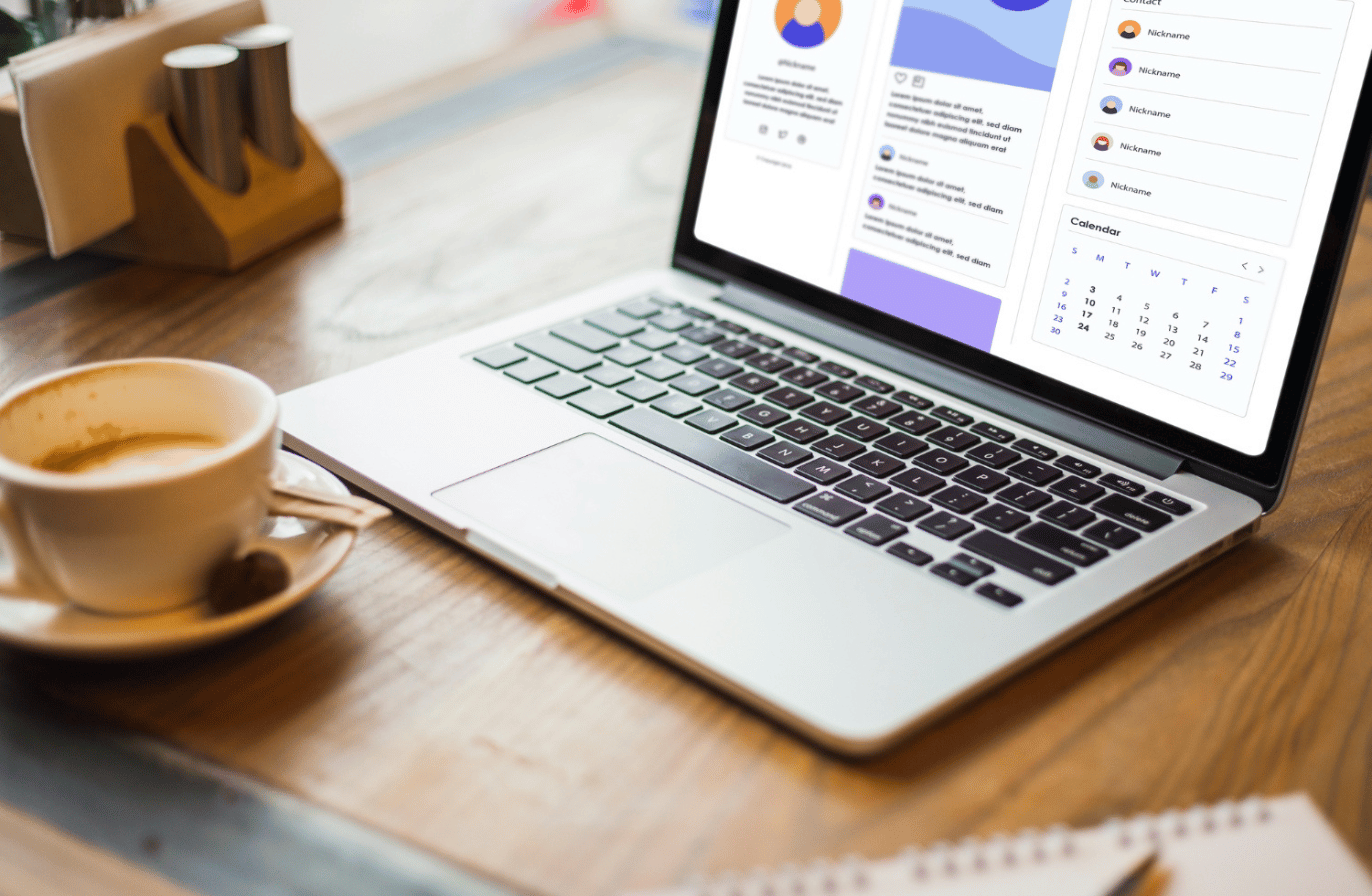
When was the last time you really looked at your LinkedIn presence and asked yourself: is this actually working for us?
That’s exactly what a LinkedIn audit helps you figure out. It’s not just about polishing your company page—it’s about digging into your content, metrics, and audience to see what’s bringing value and what needs a refresh.
In this article, we’ll walk through how to run a LinkedIn audit step by step, from setting the right goals to spotting your top-performing content pillars, checking out the competition, and even putting a number on the organic value of your posts.
Key takeaways
-
A LinkedIn audit helps you evaluate your page, content, and performance to align with business goals.
-
Identifying your best-performing content pillars helps you double down on themes that resonate with your audience.
-
Measuring Organic Value translates your organic engagement into monetary terms, helping prove ROI.
-
A successful LinkedIn audit combines profile optimization, content performance analysis, and ROI measurement into one clear strategy.
What is a LinkedIn audit?
A LinkedIn audit is the process through which you assess your LinkedIn content’s performance, by looking at data.
This is how you find out what types of posts work best for your brand.
The results you get after conducting a LinkedIn audit help you develop a new content plan or adjust your current strategy
How to perform a LinkedIn audit
By learning how to conduct a LinkedIn audit, you figure out what are the steps you need to take in order to be better at what to post on LinkedIn.
This step-by-step guide on how to develop a LinkedIn audit will help you ace your LinkedIn marketing game.
Establish what you want to achieve
Before diving into metrics and performance, a LinkedIn page audit should start with clear objectives. Without defined goals, it’s impossible to know whether your efforts are paying off or how to adjust your strategy.
Ask yourself:
What do we want LinkedIn to do for our business?
Depending on your priorities, here’s what your audit should emphasize:
- If brand awareness is your main goal → focus your audit on reach, impressions, and follower growth.
- If lead generation is the priority → evaluate click-through rates, conversion actions, and how well your content drives traffic.
- If community building matters most → analyze engagement rates, comments, and the overall interaction quality.
- If employer branding is key → review employee advocacy, company culture content, and talent-related engagement.
- If thought leadership is the aim → assess post formats like articles or long-form posts, and check performance of expert-driven content.
Analyze your LinkedIn profile: profile image, banner image, headline
Next, you have to assess what you already have. The first impression matters. Always.
That’s why you should make everything sync with your brand’s values, from your LinkedIn profile picture to your headline, description and Overview section.
Profile picture
A clean, professional photo will help your profile stand out from the crowd. As a brand, I recommend you to use your logo as a profile picture.
Banner photo
If you haven’t designed your own banner image yet, that time has come. Use an actionable insight about your brand, a short CTA and also include your logo.
Yes, it’s that simple. These are just the right elements so that you have a cover photo that will steal everyone’s attention when coming across your LinkedIn profile.
Since Socialinider is an analytics tool, we've created our banner to let people know that they can use our tool to discover in-depth social media insights.
Overview section
The overview section is essential when it comes to search on LinkedIn. By using just the right keywords, users will easily find your brand’s profile.
Like an Instagram bio, your brand's LinkedIn overview section should be eye-catching and informative at the same time.
It should be able to hook future clients. You need to convince users that adding you to their LinkedIn connections is a great choice.
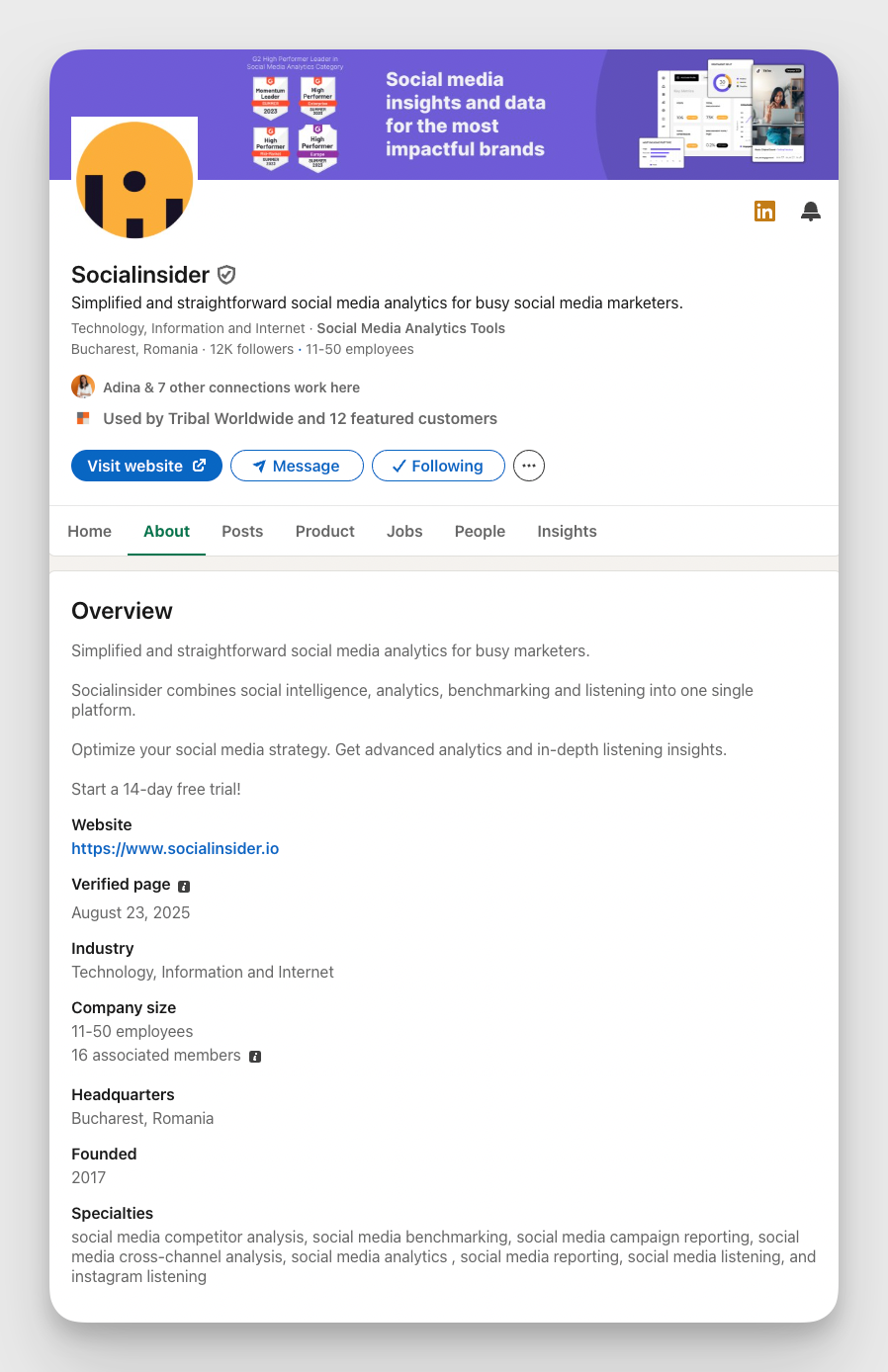
Let people know more about your brand, what you do, what products and services you provide, the link to your website, the industry you’re part of and everything about how you foundejnjd the brand.
This is also the place where you can place a call to action, such as:
- Please visit our website...
- Questions? Please email us at...
- Follow us here for daily tips
Identify the correct type of content for your brand on LinkedIn
Judging by your audience’s preferences, after a session of “trial and error”, you will find out what their favourite type of content is for LinkedIn.
By looking at followers’ demographics and assessing the performance of your LinkedIn posts via LinkedIn analytics, you can easily find out what’s your top performing type of content, depending on your industry.
This will help you focus on a particular type of content. Based on our recent LinkedIn study, we found out that multiple images score more engagement than any other type of post.
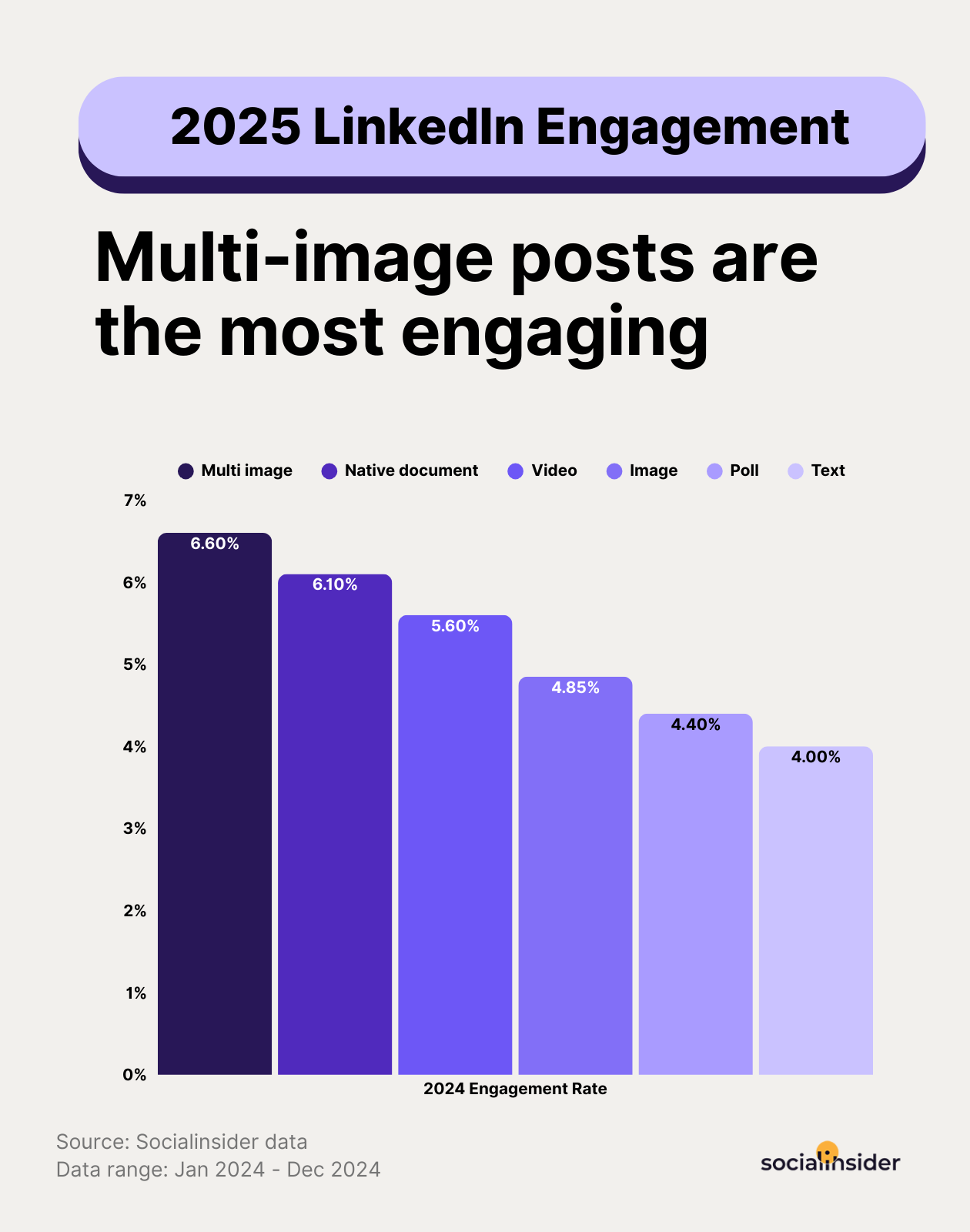
Understand what your best-performing content pillars are
To truly refine your LinkedIn strategy, focus on the content themes—or content pillars—that consistently drive engagement. Socialinsider’s Content Pillars feature makes this process both intuitive and powerful.
What are content pillars?
In Socialinsider, Content Pillars are the foundational themes around which your brand’s social media content is structured. They come in two forms:
- Industry Content Pillars – Automatically generated via AI based on your industry, offering insight into what resonates broadly across your sector.
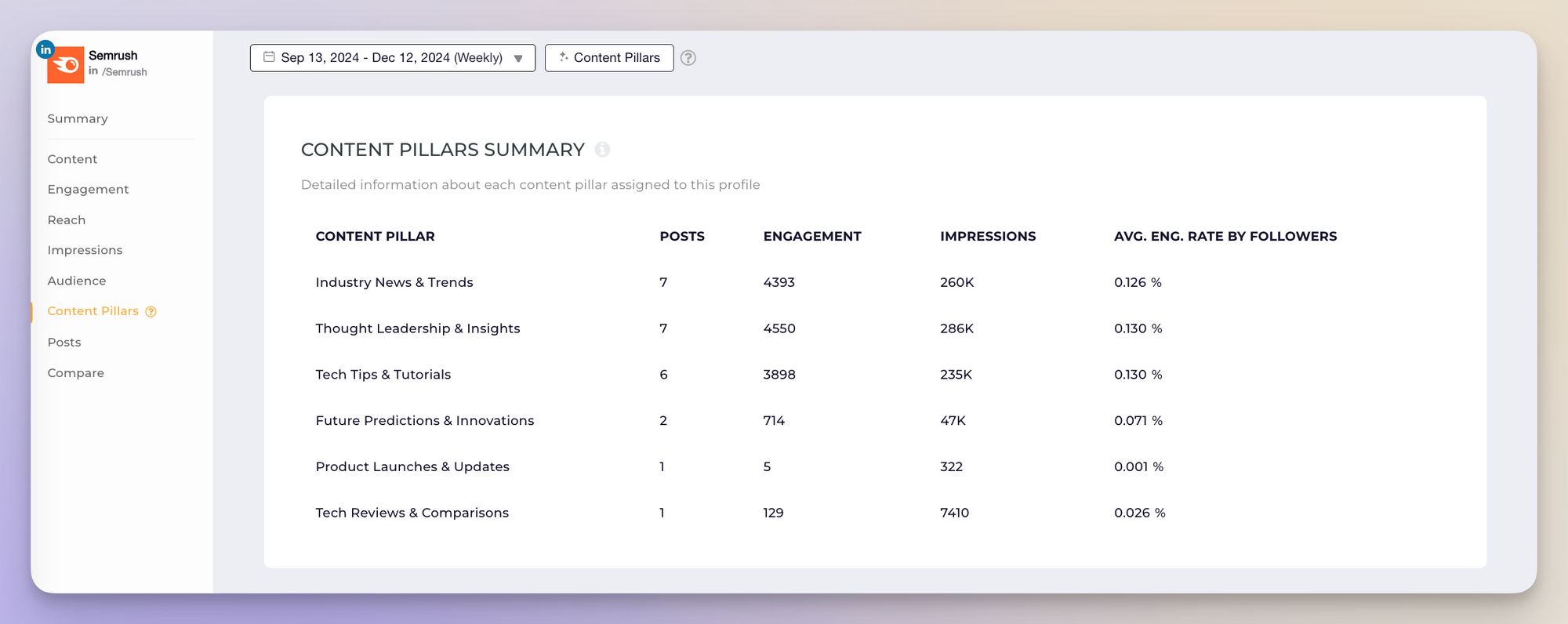
- Brand Content Pillars – Custom themes you define to align with your specific goals, values, or campaigns.
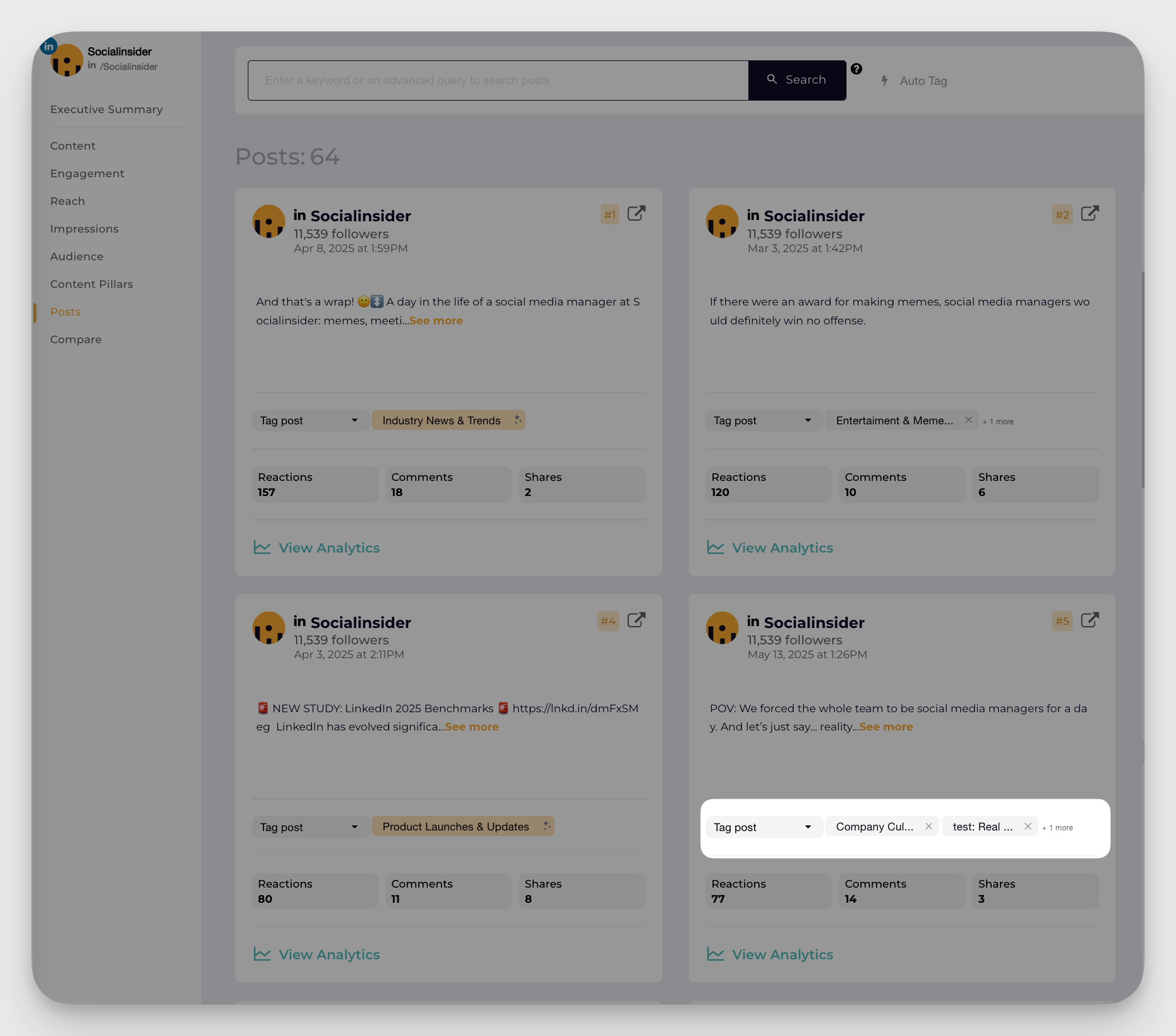
Why evaluate your top-performing pillars?
Understanding which pillars perform best helps you:
- Maintain consistency in messaging and maintain brand identity.
- Optimize engagement by doubling down on themes your audience loves.
- Structure your content strategy efficiently and purposefully.
How to analyze content pillars performance in Socialinsider?
Use the following steps within Socialinsider to identify and act on your best-performing pillars:
- Add your profile to Socialinsider
- to access the Content Pillars feature from the left-sided menu.
- Explore AI-generated Industry Pillars alongside any Brand Pillars you’ve created.
- View insights like:
- Number of posts per pillar
- Total engagement and average engagement rate
- Visual breakdown via bar charts for usage and performance across themes.
In the Benchmarks view, you can also compare your content pillars—both in your brand and among competitors. You’ll see which themes are most prevalent and which generate the strongest interactions.
PS: Leverage auto-tagging to save time: define keywords or hashtags, and Socialinsider will automatically tag both existing and future posts into the appropriate Brand Content Pillars.
Whenever I do a social media audit, I usually start by looking at the basics, making sure all of the profiles are set up correctly, branded consistently, and fully optimized.
Then I’ll dig into the content itself: what’s been posted, how often, and what type of content performs best. I also look at the audience, who’s following, how engaged they are, and whether that matches the target customer the business wants to reach. From there, I’ll compare what’s working versus what’s not, and I’ll pull together clear recommendations for how to improve moving forward. - Jameka Christy, Social Media Strategist
Measure the organic value of your LinkedIn content
When you’re running a LinkedIn page audit, engagement metrics alone don’t always tell the full story. You need a way to translate likes, comments, shares, and clicks into a metric that reflects the real business value of your organic strategy. That’s where Socialinsider’s Organic Value feature comes in.
What is organic value?
Organic Value helps you quantify the monetary worth of your unpaid LinkedIn activity, by estimating how much it would have cost to achieve the same results through paid campaigns. In other words, it puts a price tag on your organic performance.
Why it matters
- Prove ROI: Show stakeholders the financial impact of your LinkedIn presence without relying only on paid media metrics.
- Budget smarter: Understand where organic reach is saving you ad spend and how it complements your paid strategy.
- Benchmark performance: Compare organic value across time periods, campaigns, or even against competitors.
How to use it in Socialinsider
- Add a social profile to the Socialinsider dashboard.
- Within the Home section, go to Settings and click on the Organic Value Configuration.
- Then select the platform for which you want to calculate your organic value by clicking on the Configure Value button.
- Based on the specifics of your industry and your usual benchmarks, assign a value to each specific metric.
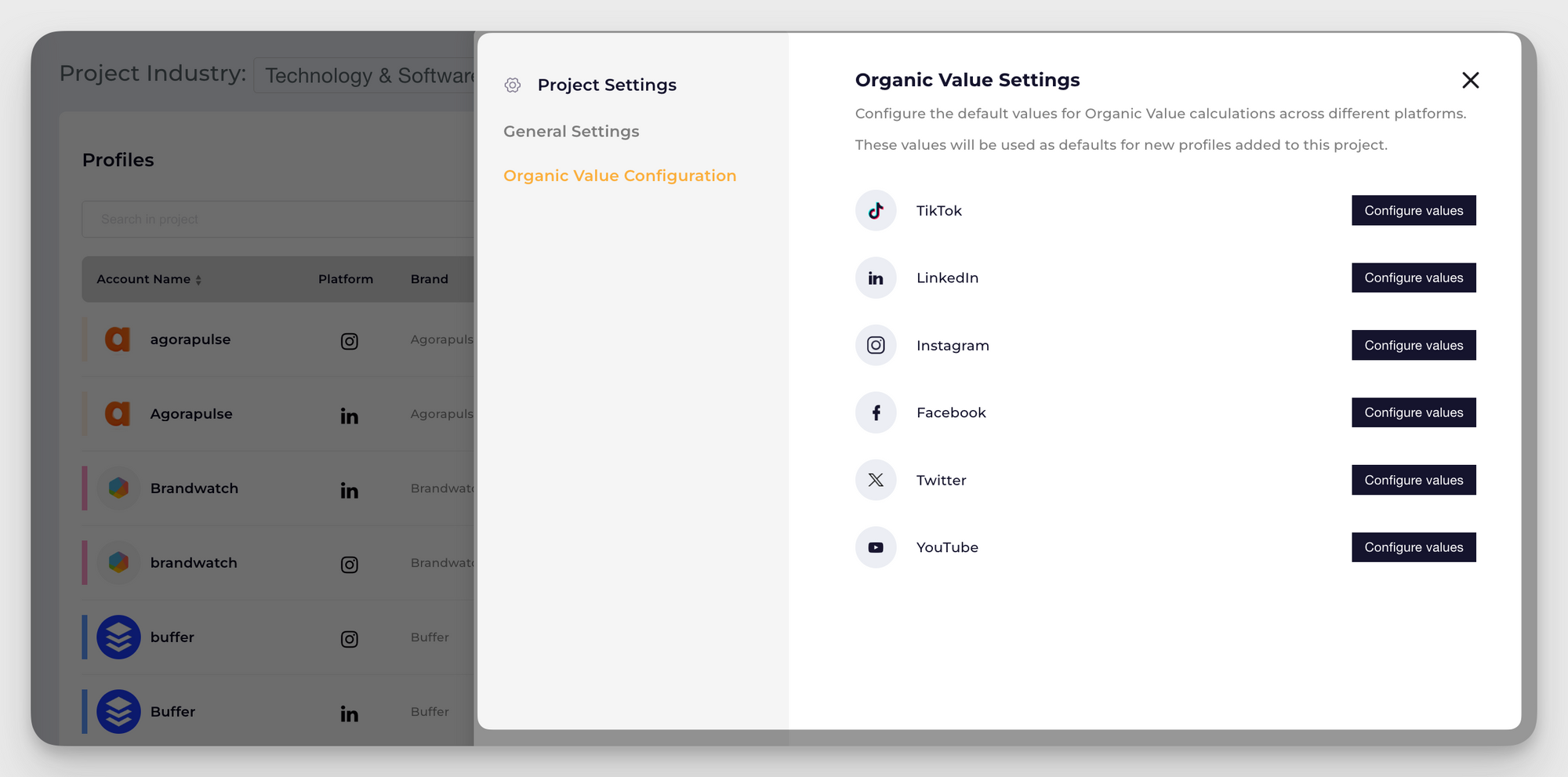
- Next, from the left-sided menu, click on the social profile for which you want to see your numbers.
- Then, click on the Organic Value from the left-sided menu, and you'll see the organic data value for that specific channel.
Check competitors’ performance
Looking at your LinkedIn competitors should also be part of your LinkedIn audit. However, you can only do this by using a LinkedIn page audit tool to look at their posts’ metrics.
By looking at what your competitors are doing, you will find out where you’re at in terms of performance in your industry and niche.
How are you supposed to advance through your niche and make space for a successful campaign if you don’t know where you stand now?
Look at what your competitors are doing, by analyzing their posts, the way they interact with users and how engaging their posts are.
This part of your LinkedIn audit will help you improve your LinkedIn content strategy and become a fierce competitor for others from your niche.
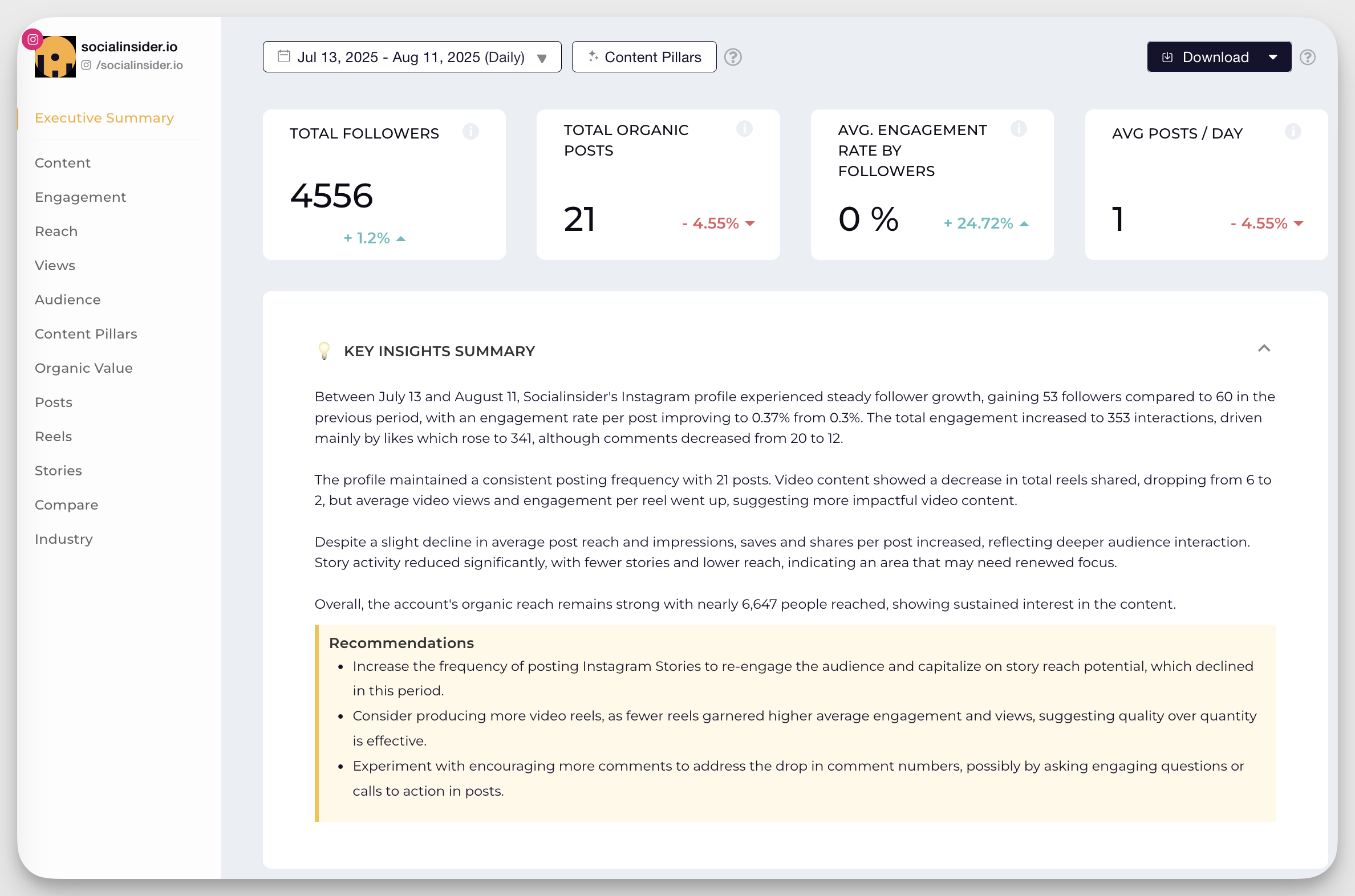
Competitive data is actually really important when I’m running an audit. It gives context for how the client’s social media is performing compared to others in their industry.
By looking at competitors’ content, posting frequency, engagement rates, and what’s resonating with their audience, I can identify gaps and opportunities for the client. It helps me not just know what’s working, but also see what the client could be doing differently or better to stand out. - Jameka Christy, Social Media Strategist
Benefits of a LinkedIn audit
Performing a LinkedIn audit can benefit your LinkedIn campaign strategy.
Here are just a few of the advantages of LinkedIn audit, to convince you to conduct one regularly.
- You will know if your brand is on the right track, according to your plan towards your main LinkedIn strategy goal
- You will get to know your audience by looking at demographics and finding out what their needs are based on their interactions with your posts
- You will get data about post performance, learning what type of content is the most engaging one for your audience
- You get to know what your competitors are doing and what’s their overall LinkedIn performance
Find the right LinkedIn audit tool
Looking at data has never been easier with a LinkedIn analytics tool that highlights the importance of metrics and offers you actionable insights.
With Socialinsider you get to check a lot of LinkedIn metrics for your business page like:
- Engagement
- Impressions
- Follower growth
- Top posts
- Video views
- Demographics
What most people don’t know is that Socialinsider is more than an analytics tool. campaign strategy, reporting, benchmarking and competitors analysis
Let’s look at post performance in Posts. I decided to group posts in a campaign, so I tagged our “5 in 5” posts, where we offer users news about the latest updates in social media.
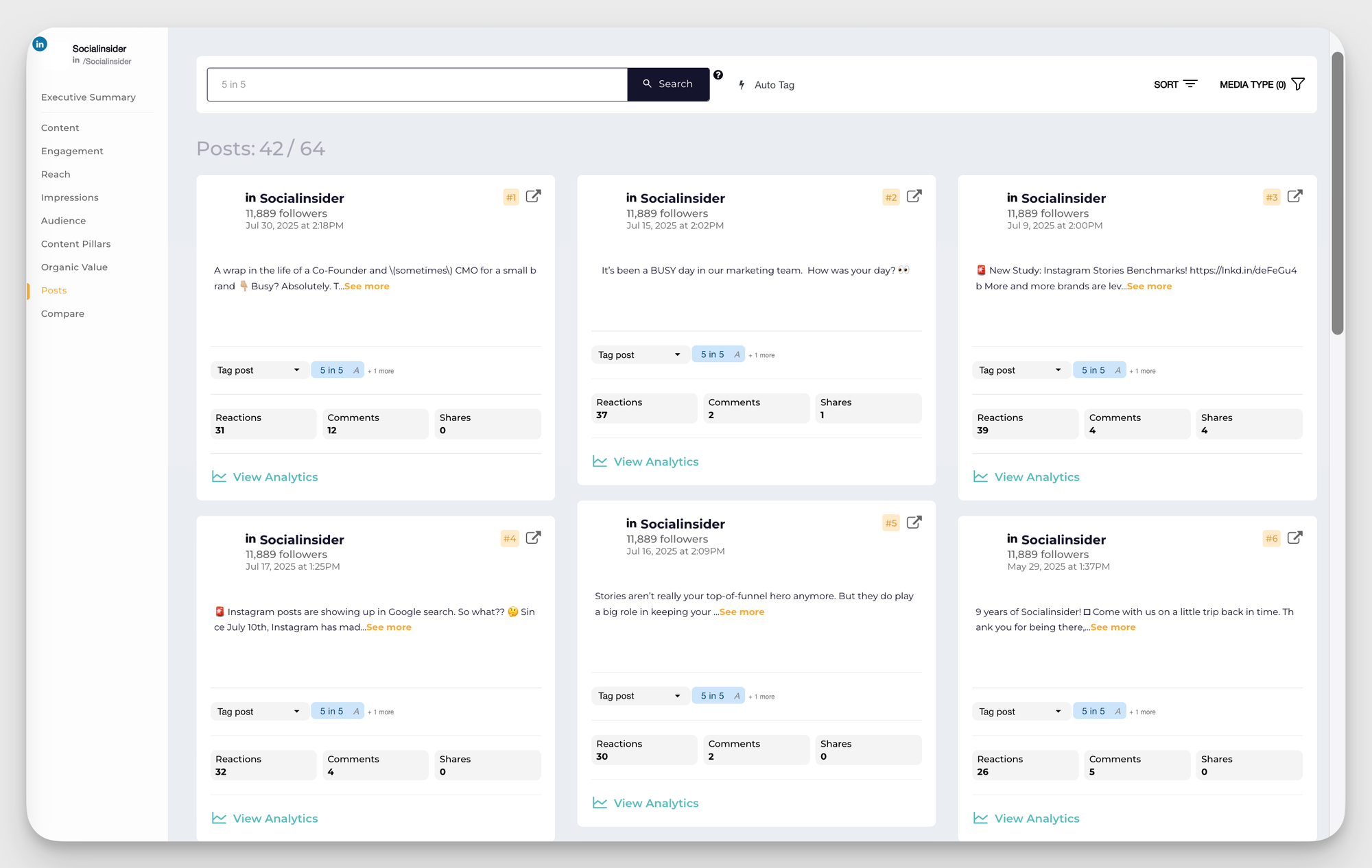
After a quick search, I found out that there are 42 posts out of 64 posts belonging to this content pillar in the past three months.
Here you can see individual social media metrics for every post tagged in this campaign. You can check engagement rate, impressions, likes, comments, shares and engagement evolution.
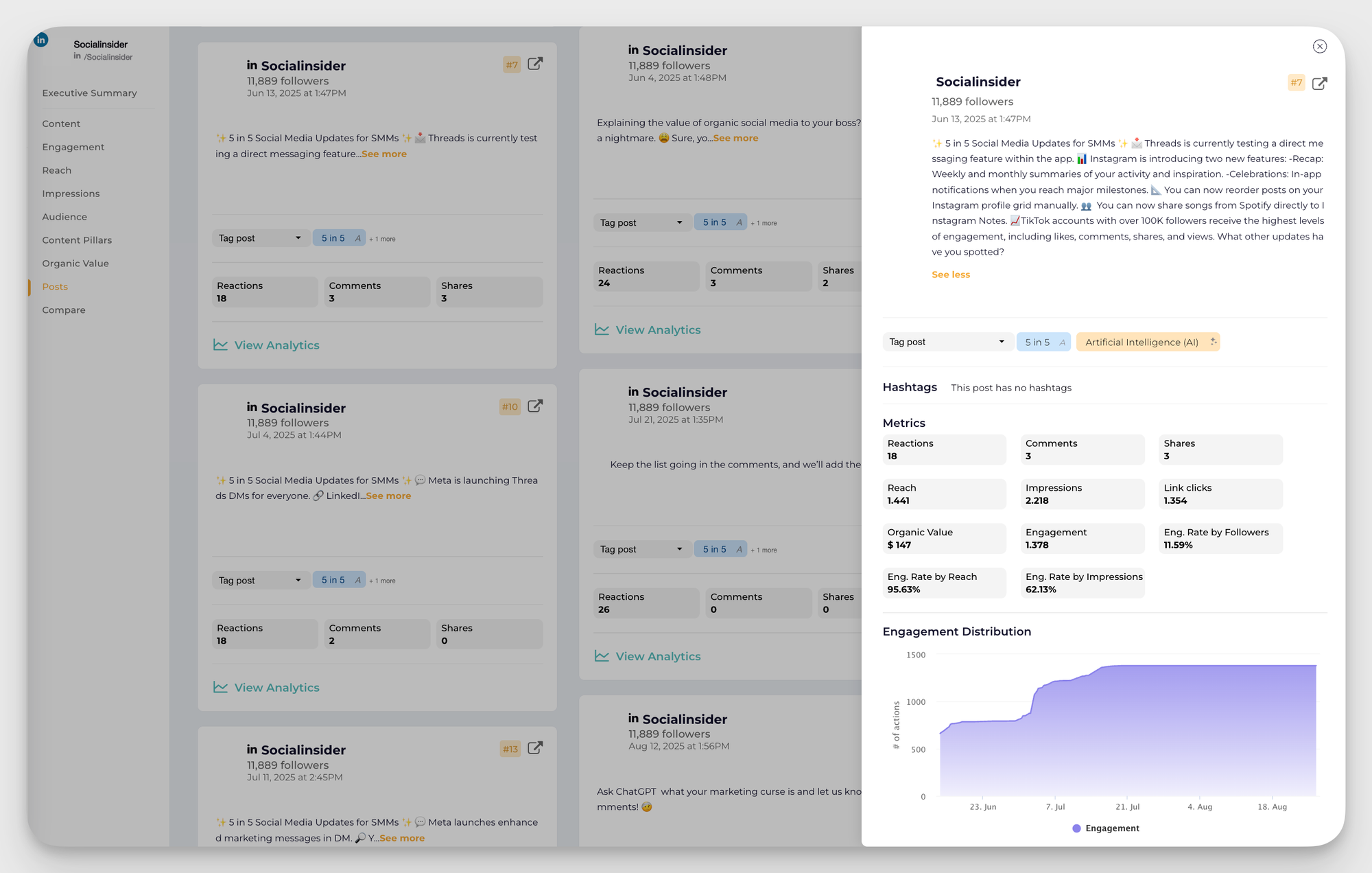
The insights you discover can help you better understand your audience and craft engaging content for them.
This part of your LinkedIn audit helps you increase brand awareness, build a loyal community around your brand and increase sales through your LinkedIn campaigns.
For measuring, the main things I look at depend a little on the client’s goals, but in general I pay attention to engagement rates, reach, impressions, follower growth, and click-through rates. If the goal is more sales-driven, I’ll also look at conversions or traffic to the website.
Basically, I try to focus on the numbers that show whether content is really connecting with the audience and driving the results the business actually cares about. - Jameka Christy, Social Media Strategist
Final thoughts
Running a LinkedIn audit isn’t just a box to tick—it’s a way to make sure the time and effort you’re putting into the platform actually pay off. By stepping back and looking at your goals, your content pillars, your audience, and even the organic value of your posts, you get a clearer picture of what’s working and what needs a tweak.
Think of it as hitting refresh on your strategy: you drop what doesn’t serve you, double down on what does, and walk away with a LinkedIn presence that feels intentional and effective. And the best part? With the right tools, it doesn’t have to be complicated—it just has to be consistent.
FAQs about LinkedIn audit
How to measure progress on LinkedIn?
Progress is all about consistency over time. Instead of only looking at single posts, compare your performance month over month or quarter over quarter. Are your engagement rates climbing? Are you reaching more of the right people? Benchmarking your results and keeping an eye on trends helps you see whether your LinkedIn strategy is actually moving the needle.
How to check LinkedIn growth?
Growth usually shows up in two places: your follower count and your reach. Keep track of how your audience size changes over time, but don’t stop there—look at whether those new followers are engaging with your content. A growing audience that’s active and aligned with your brand is a much stronger signal of healthy LinkedIn growth than numbers alone.
Analyze your competitors in seconds
Track & analyze your competitors and get top social media metrics and more!
You might also like
Improve your social media strategy with Socialinsider!
Use in-depth data to measure your social accounts’ performance, analyze competitors, and gain insights to improve your strategy.



